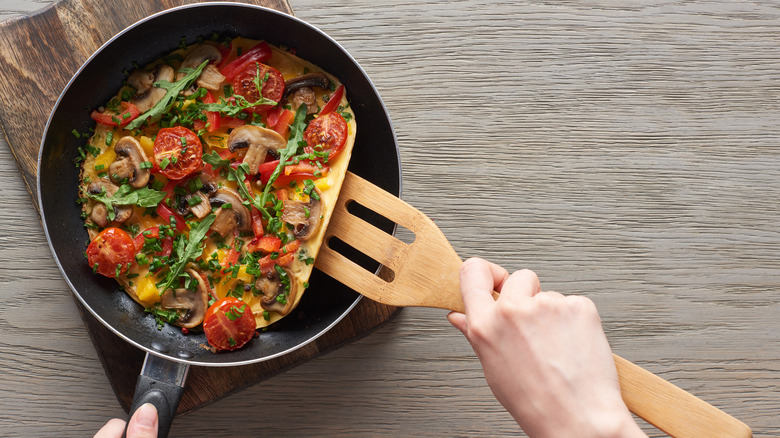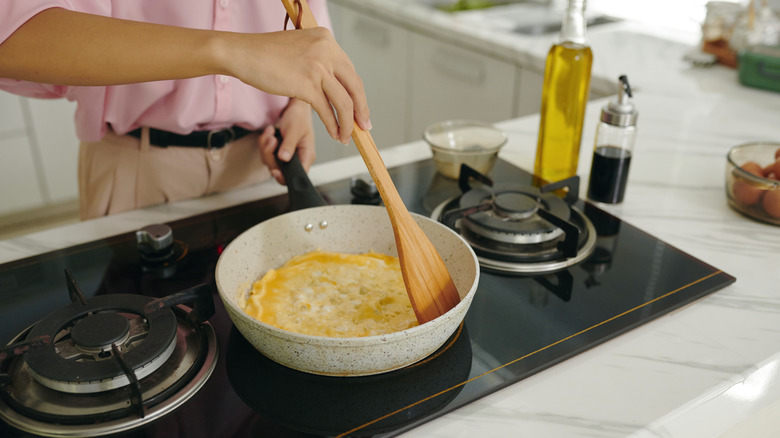The Mistake That's Making Your Omelet Stick To The Pan
There are several simple ways to take your omelet to the next level, from adding cream cheese to experimenting with different vegetables and proteins. But no matter how creative your ingredients are, it may all go to waste if your omelet sticks to the pan — a common mistake that can ruin both texture and presentation. To understand what causes sticking omelets and how to prevent this, Food Republic consulted Ken Tobby, food scientist and founder of Organic Solace. "High heat often causes an omelet to stick to the pan because it quickly evaporates the eggs' moisture," he explained. "This makes them more susceptible to scorching and attaching firmly to the surface of the pan."
It's not just the loss of moisture — high heat can also affect the eggs' structure. "With high temperatures, the eggs' proteins coagulate rapidly, creating a hard, rubbery coating that sticks to the pan, particularly if it is not seasoned or well-greased," he said. The solution is simple: lowering the heat. "Reducing the heat lets the eggs cook evenly and gently ... the controlled cooking allows the omelet to release from the pan, leading to a tender, gentle texture that folds smoothly without sticking or tearing." That being said, don't swing too far in the other direction. Cooking on too low of heat can also cause issues, like your omelet taking too long to set and sticking just the same. The sweet spot is medium-low heat for even cooking and browning.
How to make the perfect non-stick omelet
Lowering the heat is an important step to nailing your omelet, but it's not the only one. The type of pan you use, for example, can make all the difference. Ken Tobby recommends a cast-iron pan for its smooth surface, although any non-stick pan will do the trick. You'll also want to add a fat to create a protective barrier between the eggs and the pan. "I begin by heating the pan so that water drops sizzle but do not evaporate immediately, then introduce a small quantity of butter or oil such as avocado oil to evenly cover the surface," Tobby explained. "Butter adds taste and aids in creating a soft texture, while oils prevent burning due to their high smoke point."
Once your pan is heated and greased, pour in your thoroughly whisked eggs — ideally mixed with a pinch of salt — and continuously swirl the pan as the eggs cook, much like you would for a French omelet. This movement helps build a fine curd structure and even cooking, resulting in a fluffy omelet that lifts right off the pan, according to Tobby.
Don't forget about your fillings, either. Freshly grated cheese, vegetables, ham, or bacon add much-needed flavor and texture — just be sure everything is chopped into small pieces. Large chunks can weigh down the eggs, making the omelet difficult to fold and prone to tearing. It's also best to wait until the eggs are mostly set to add your fillings and fold over — otherwise, they'll sink to the bottom of your omelet and potentially stick to the pan.


